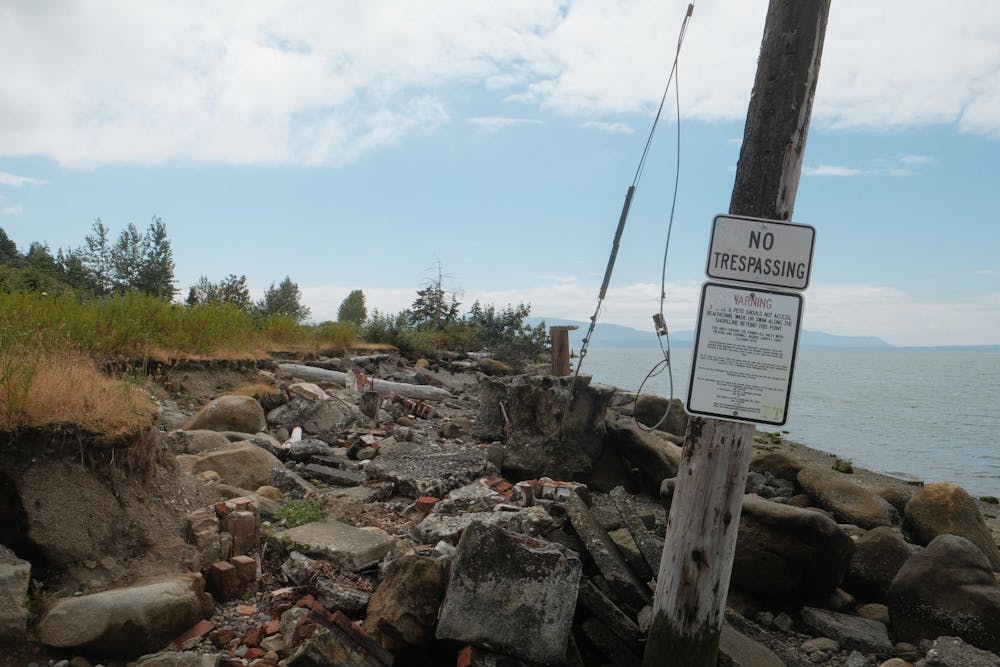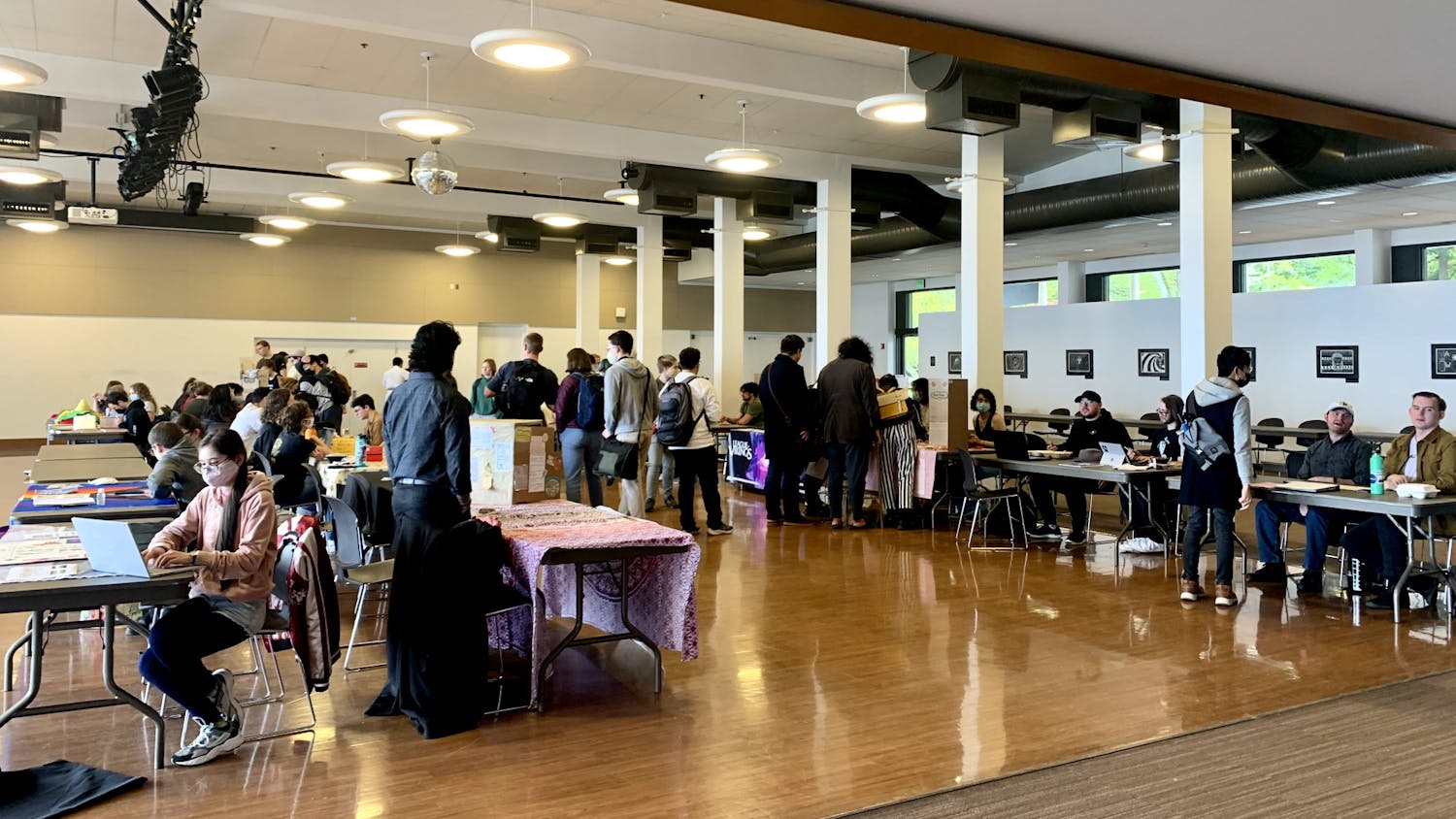At the end of Bellingham’s Cornwall Avenue lies a small beach covered in trash and shards of sea glass. Mounds covered in tarps rise up from behind the chain link fence that attempts to keep people away and the remnants of roads have crumbled onto the rocky shore.
This is what's left after over one hundred years of industrial use on this 17-acre plot of land that the city is working on turning into a park.
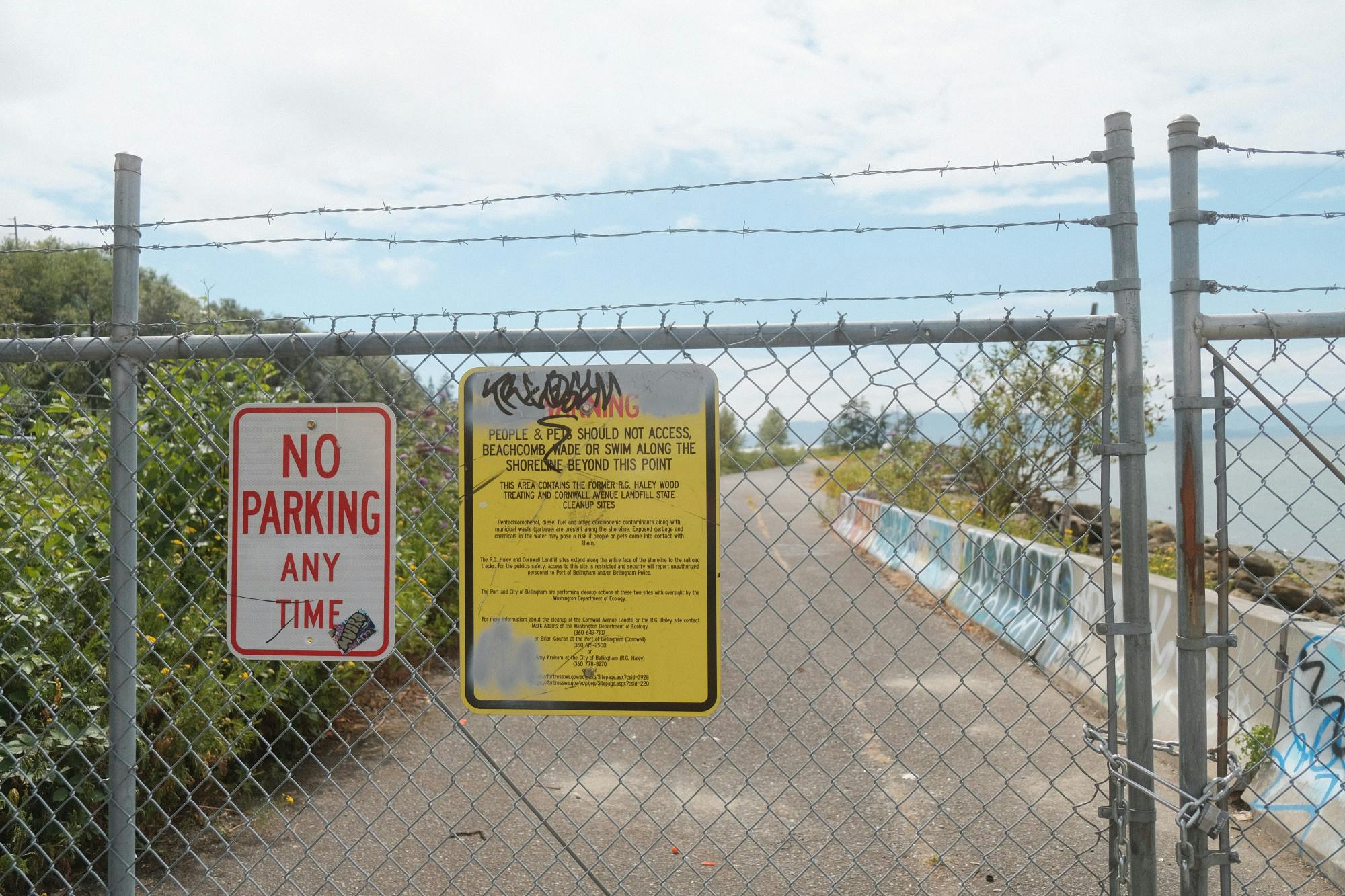
A barbed wire chain link fence marks the entrance for the RG Haley cleanup site in Bellingham, Wash., on Monday, July 18, 2022. // Photo by Will Story
“Full development of the park would be [over] several years in several phases,” Gina Austin, project engineer with the City of Bellingham and the park development manager for the Cornwall Beach Park site, said.
Throughout the Bellingham Bay area, there are 12 different sites designated for cleanup. Out of those 12 sites, two have been completely cleaned up.
Washington state's waste cleanup law, the Model Toxics Control Act (MTCA) works to create a safe and healthy environment, according to the State of Washington Department of Ecology.
The new park the city is developing centers around two of these MTCA sites, the RG Haley site and the Cornwall Avenue Landfill site.
“We're in the design [part] of phase one development and our primary goal is to take care of underground infrastructure and anything that would be impacted by the cleanup, because we don't want to go into the ground twice,” Austin said.
Austin said they are preparing for future development, which will include buildings such as a restroom and a concession park building for boat rentals.
The dream of the new park is slowly coming to fruition. The city of Bellingham's 2014 Cornwall Beach Park Master Plan shows the planned layout of the park. // Left, Google Earth satellite image // Right, image courtesy of City of Bellingham
The master plan for this site was adopted in 2014, Austin said.
“[The plan] includes beach development at the south end of the park and trails, the main loop trail, some habitat and buffer planting along the shoreline and underground utilities,” she said.
Recently, the City of Bellingham held a public naming period where members of the community could submit ideas for park names.
“It's set up so that people could present the park name that they wanted to suggest and then other people could provide likes on it. So it's really just gathering input from the public,” Austin said.
No name has been approved yet, but all 228 suggested names can be viewed on the Engage Bellingham website.
The city is also coordinating with Lummi Nation and Nooksack Nation to find out if they might be interested in naming the park with a traditional name, or if the area already had a name, Austin said.
The city council is set to approve the final name of the park on Aug. 1, 2022.
One of the most popular names was Glass Beach Park, which is what many locals call the beach due to the high amount of debris, especially glass, on the beach. The site has a substantial history of industrial use that led to the cleanup today.
According to Jeff Jewel, an archivist and historian with Whatcom Museum, it began with the Bellingham Bay Improvement Company Mill built at the end of Cornwall Avenue.
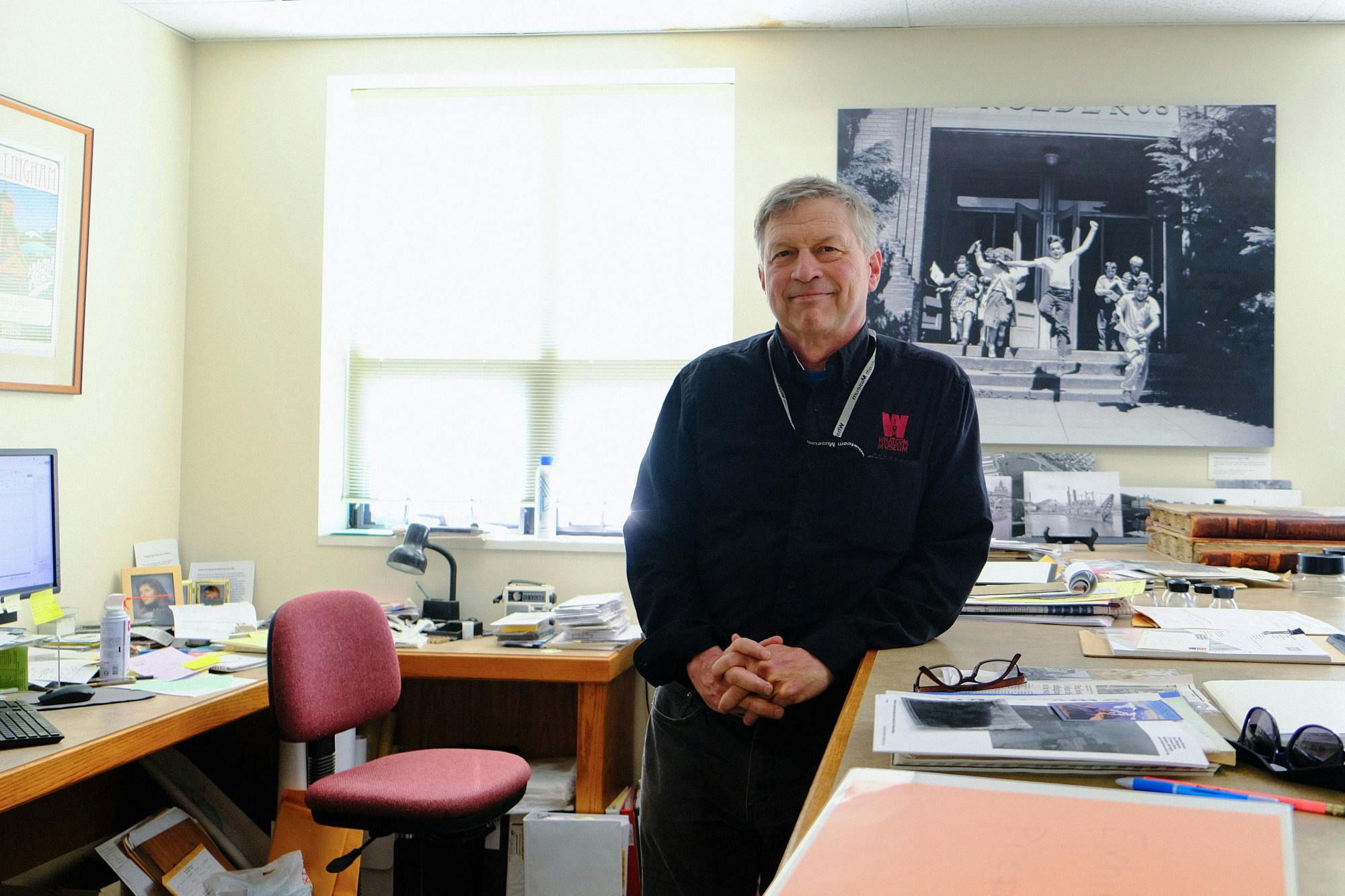
Jeff Jewell in the Whatcom Photo Archives in Bellingham, Wash., on Thursday, July 14, 2022. // Photo by Will Story
“It lasted up until 1899 when it burned and then they rebuilt it,” Jewell said.
It opened again two years later as one of the largest sawmills on Puget Sound exporting to the Pacific Rim, he said.
Bloedel Donovan, which had its mills out of Lake Whatcom, bought the mill and turned it into their cargo mill for export again to the Pacific Rim after the opening of the Panama Canal, Jewell said.
“Bloedel Donovan lasted until the end of World War II and then the mill site was deliberately destroyed for redevelopment,” Jewell said. “Then in the early '50s, we see the development of laminated beam technology.”
Laminated wood is made by layering smaller pieces of wood and bonding them together to create a larger board or beam, Jewell said.
Chemicals used in the lamination process make up much of what contaminates the RG Haley site today.
A rainy day in 1960 versus a sunny day in 2022. Brooks Lumber Co.'s main office at the south end of Cornwall Avenue in the former Bloedel Donovan offices building still stands today. // Left, photo by Jack Carver, courtesy of Whatcom Museum // Right, photo by Will Story
Throughout the 1950s and 1960s, a municipal landfill was opened to the public near the industrial area towards the south end of the site.
“It was just ‘go dump it, dump it in,’” Jewell said. “But Sehome had always been blessed with having deep water access so by just throwing garbage in there it wasn't settling. They realized, ‘oh, we're just throwing garbage on the water,’ so they shut that down.”
According to the Department of Ecology, an investigation into the site estimated 295,000 cubic yards of municipal waste and 94,000 cubic yards of wood waste contaminate the site.
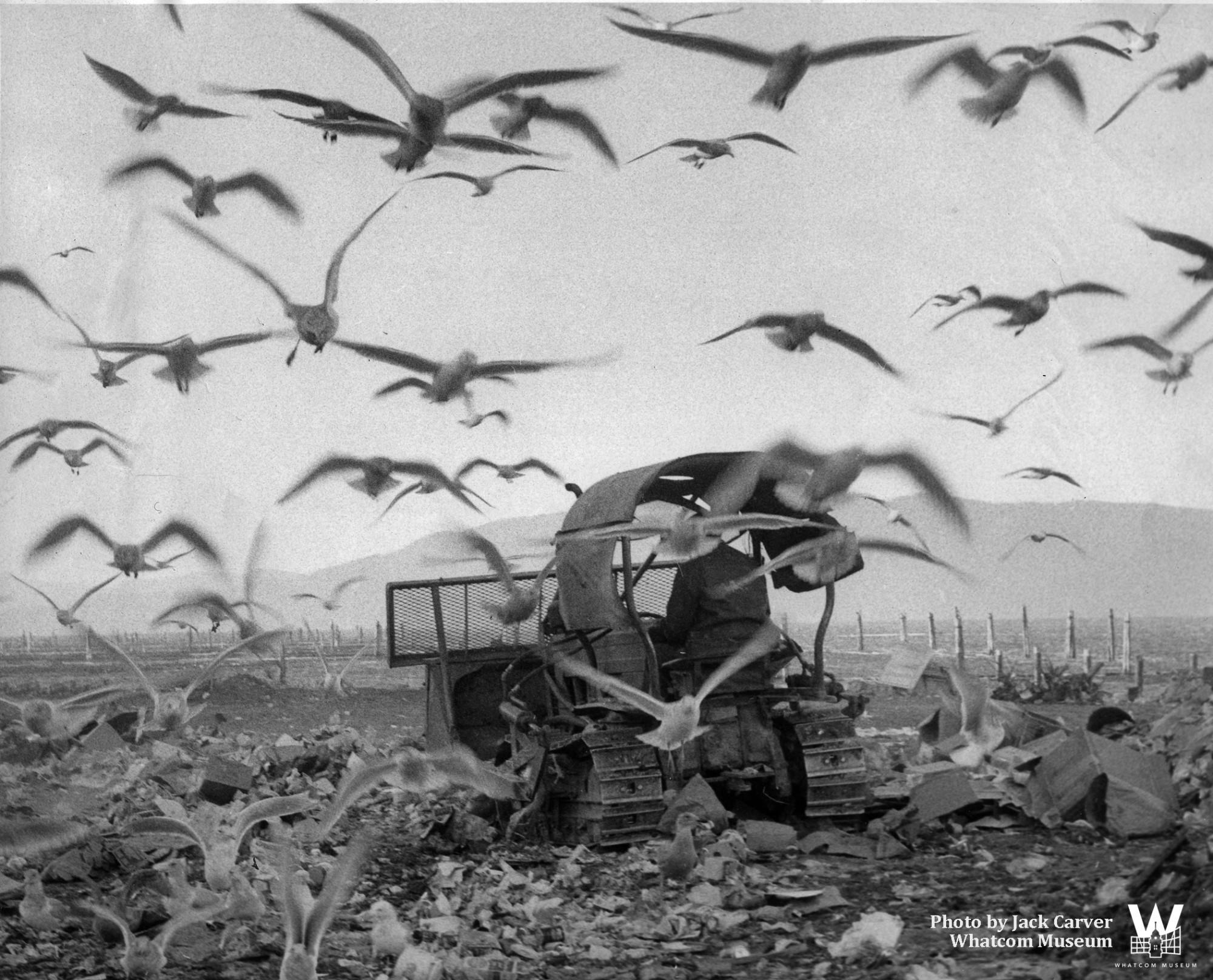
A tractor drives by as seagulls swarm its driver, Dave Carlson, at the dump on the south end of Cornwall Avenue, Bellingham, Wash., January 16, 1957. // Photo courtesy of Whatcom Museum
“The nature of our interaction with the shoreline has changed over time,” Jewell said. “People decid[ed] that water access is more of a recreation and wildlife habitat than it is for heavy industry to be located there.”
Aerial view of RG Haley Corporation, AmFab, Brooks Manufacturing, off the south end of Cornwall Avenue from 1969 and an aerial view of the same site from 2017. // Right, Photographer unknown, image courtesy of Whatcom Museum // Left image courtesy Washington State Department of Ecology
Following the guidelines of the MTCA, an engineering design report was put forward in 2018 to address the Cornwall Landfill site, and one is in development for the RG Haley site. The report details the specific process planned for use to clean up the site.
“The main goal for how to make this protective for human health and the environment is to remove the exposure pathways for humans and all the critters that that call home in the environment for any of the contamination that's there,” Ian Fawley said.
Fawley is the Public Involvement Coordinator for MTCA clean-up projects around Bellingham Bay with the Washington State Department of Ecology.
“The simplest way to be able to think about it is it's a multi-layered capping system, shoreline stabilization system and a thin layer sediment cap that'll be in the water,” Fawley said.
Fawley said the plan is to use multiple layers of material over the waste, coupled with waterproof sheets and a landfill gas collection system so that people visiting the park would have no ability to contact any of the municipal waste of the landfill that would be underneath their feet.
In the original environmental report from 2013, the cleanup of the Cornwall Avenue Landfill site was expected to cost about $9.1 million.
According to the city’s website on the project, $1.2 million has been allocated for the park for an initial utility and grading design and construction.
If everything goes according to the timeline put forward, the city hopes for the construction of the park to begin in September 2024.
“The waterfront in general has just been wonderful to be open to the public, with Waypoint Park, and we just want to welcome people to the waterfront and enjoy this park when it's developed,” Austin said.
Will Story (he/him) is a city reporter with The Front this quarter. He is majoring in visual journalism and hoping to minor in photography. At The Front he’s focused on covering city news, events, and how Bellingham is changing. You might find him getting Turkish coffee at Ashuri or exploring the trails of Whatcom county with a camera.
You can reach him at willstory.thefront@gmail.com or on Instagram at @thatwillstory


